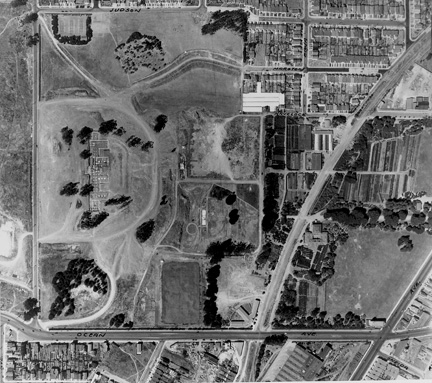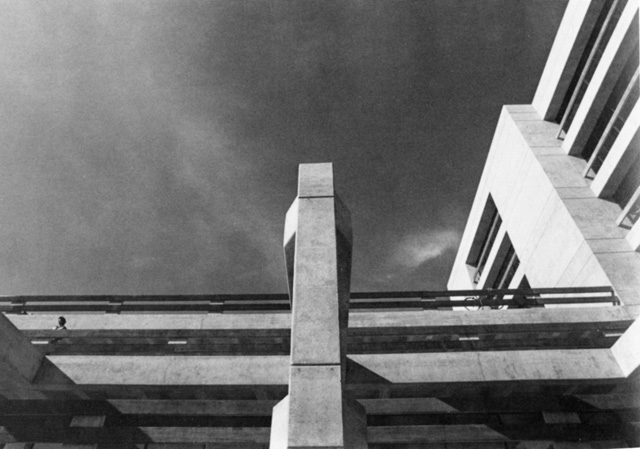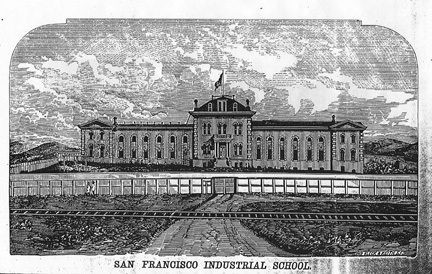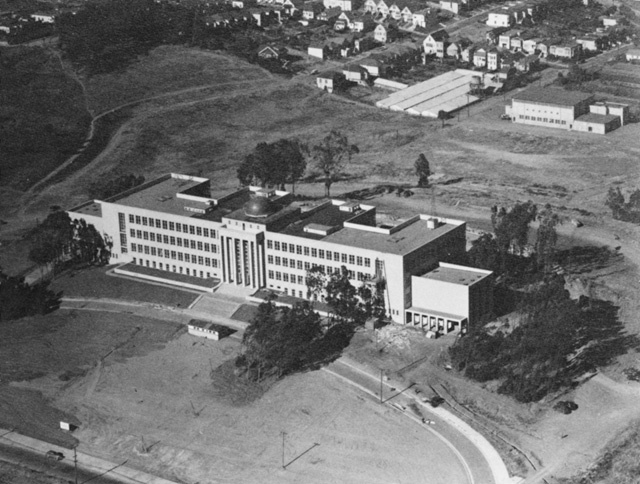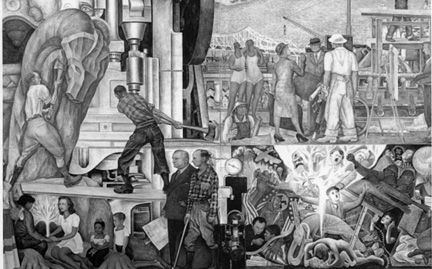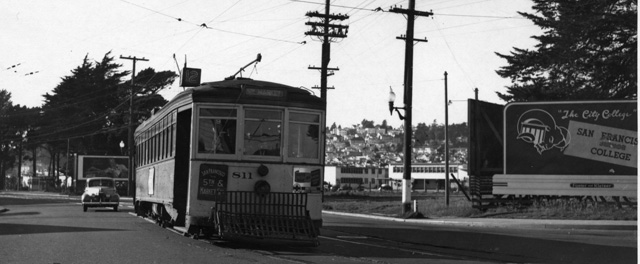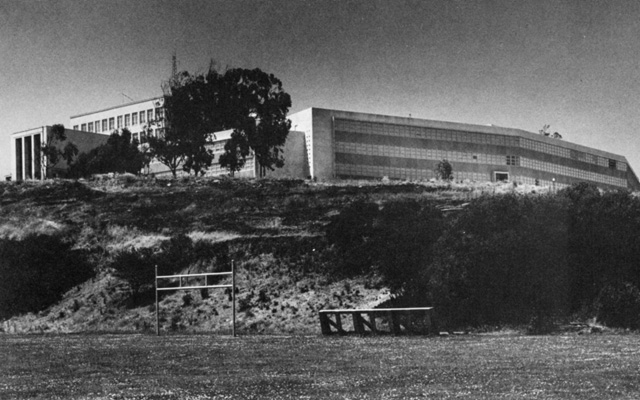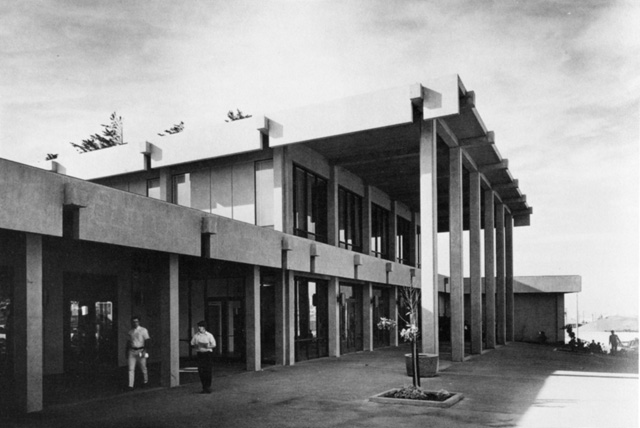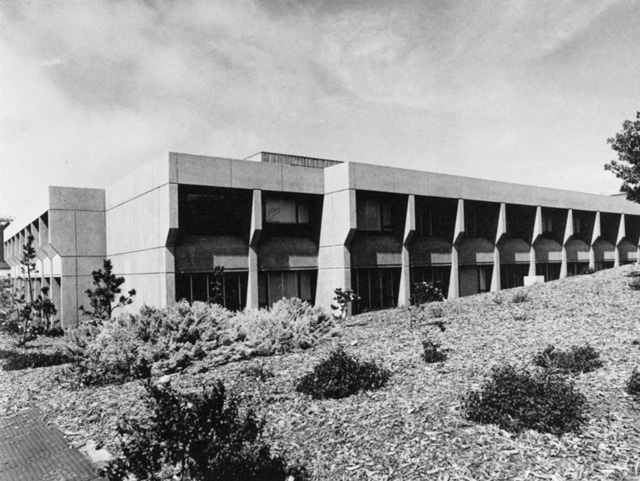San Francisco City College
San Francisco City College
The San Francisco Junior College was started in 1935 with Dr. Archie Cloud, its initiator, as President. The City College site in Balboa Park (below left) was first occupied in 1940 with Timothy Pflueger as the College Architect. The three permanent buildings completed in 1940 and 1941 were the all-purpose Academic Building, now converted to sciences, the Men’s and Women’s Gymnasia and the Athletic Field. The five story classically designed Science Hall was purposely made 89 feet longer than San Francisco’s 400 foot long City Hall and placed on the crest of the highest hill on the site to claim that the building was also higher than City Hall. Cloud Hall-East or Batmale Hall, dedicated in 1978, is the eleventh permanent structure designed by the Pflueger family on the campus (below right) and named for Monterey Heights resident and former chancellor, Louis Batmale.(From “Time and Tim Remembered,” by Milton T. Pflueger and “From Dream to Reality,” by Austin White.)
Gallery
The college was built on the site of the Industrial School which operated between 1874 and 1892. Learn more about “The House of Refuge Lot,” by Angus MacFarlane at www.outsidelands.org.(Courtesy Western Neighborhoods Project.)
Next to the school was the “County Sheriff’s House of Correction Number Three” between 1874 and 1935. Groundbreaking by Mayor Rossi for San Francisco’s Junior College was held on April 15, 1937.(Courtesy Western Neighborhoods Project.)
The first permanent all-purpose Academic Building in 1942 designed by Timothy Pflueger. Incorporating art into all of his building projects, Tim obtained federal and private financing for Sargent Johnson to carve three large base relief panels above the main entrances to the gymnasiums and for two murals to be painted by Frederick Olmstead on the inside entry walls of Science Hall. (Courtesy John Pflueger and Austin White.)
Timothy Pflueger invited Diego Rivera to create his Pan American Unity Mural at the 1940 Golden Gate Exposition on Treasure Island for installation in the library he was designing for the City College Library. Due to Tim’s death, the library was never built and the mural was too controversial for the Board of Education who decided to put it into storage. Tim’s brother and Sherwood Forest resident, Milton Pflueger, convinced the college to hang it in the new theater he designed in 1961. Many of the artworks created in the “Art in Action” exhibit at Golden Gate Expostion in 1940, are shown in the mural and are on permanent display at the campus, including the college’s mascot centerpiece, a nine foot eight inch high Big Horn Mountain Redwood Ram carved by Dudley Carter. Additional art from the fair on campus includes the granite sculptures of Thomas Edison and Leonardo Di Vinci by Frederick Olmsted and the The Interaction of Science and The Interaction of Mechanism mosaics by Herman Volz.
Streetcar to City College which was the first to offer women training as aircraft mechanics and hotel and restaurant management programs.(Courtesy Ron Davis.)
Warren Coughlin and Henry Letsche in front of City College in 1943 during World War II. The war brought many challenges to the college starting with a 62% reduction in students which led to the offering of part-time enrollment for the first time and then after the war, a flood of returning veterans with “G.I. Bill of Rights” financial support for an education. (Courtesy Bill Moore.)
Cloud Hall, from the practice field, with the Academic Building behind, completed in 1954. (Courtesy John Pflueger.)
Completed in 1974, the Educational Services Building is named Conlan Hall to honor Louis G. Conlan, the President of the College for 21 years, 1949 to 1971. It’s entrance portico, here shown, faces the sloping green, the forefront of the College, and recalls the portico of the Science Building, the first and most dominant building on campus. (Courtesy John Pflueger.)
Creative Arts Building built in 1961. President Cloud and Timothy Pflueger had drawn a completely integrated building plan for the College in 1940, all placed in proportion to the center-piece Science Hall. Cloud’s successor in 1949, Louis Conlan, decided for economic reasons that future buildings would not ever be a duplicate architecturally of any other. John Pflueger integrated energy conservation into this building’s basic design. To complement the building’s solar orientation, the south and west classsrooms walls were designed with vertical and horizontal shading. The project was a 1974 American Institute of Architects Award winner.(Courtesy John Pflueger and Austin White.)



